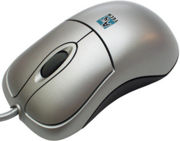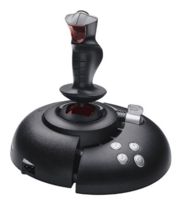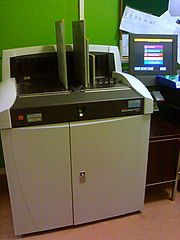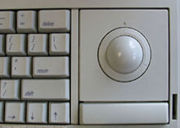User:Singhpreeti/DIFFERENCE BETWEEN INPUT AND OUTPUT DEVICE
Contents
Introduction
The computer will be of no use unless it is able to communicate with the outside world. Input/Output devices are required for users to communicate with the computer. In simple terms, input devices bring information INTO the computer and output devices bring information OUT of a computer system. These input/output devices are also known as peripherals since they surround the CPU and memory of a computer system.
What Is an Input Device?
Any number of computer peripherals can be classified as input devices. An input device is simply something that is used to interact with, or provide data to, the computer, as opposed to an output device that displays data for the user. Everyone that has used a computer has also used an input device, such as a keyboard or mouse. Without input devices, there would be no way to interact with computers.The most common input devices are the mouse and keyboard. However, joysticks, touch screens, webcams, and microphones are considered input devices as well. Some more exotic input devices that most people do not use on a daily basis are three-dimensional navigation devices.Some examples of this type of input device are mice that can point to 3D space,or punch card readers used in the early days of computing.Input is the first stage of computing, referring to any means that moves data (information) from the outside world into the processor or from one component of the computer to another.An input device is any peripheral (piece of computer hardware equipment) used to provide data and control signals to an information processing system (such as a computer).
Types of Input Devices
Keyboard
The keyboard is the most common input device. It is almost unheard of for a computer to be without some form of keyboard, be it a full QWERTY keyboard or a smaller number pad, such as those found on a cell phone. It is possible to interact with most computers solely through the keyboard, without even a mouse, because they are usually the default input device. Touch screens may eventually overcome the keyboard as well, by providing an onscreen keyboard to save space. The Keyboard is the standard data input and operator control device for a computer.
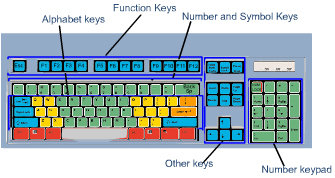
Mouse
Other than the keyboard, mice are the most common type of input device. Nearly every computer has one, and they make navigating the screen much easier than trying to use just a keyboard. Mice usually use a ball, light, or a laser to track movement. The mouse is a small device used to point to a particular place on the screen and select in order to perform one or more actions. It can be used to select menu commands, size windows, start programs etc.The most conventional kind of mouse has two buttons on top: the left one being used most frequently.
Mouse Actions
Left Click : Used to select an item. Double Click : Used to start a program or open a file. Right Click : Usually used to display a set of commands. Drag and Drop : It allows you to select and move an item from one location to another. To achieve this place the cursor over an item on the screen, click the left mouse button and while holding the button down move the cursor to where you want to place the item, and then release it.
A computer mouse
The Mouse is a popular input device. You move it across the desk and its movement is shown on the screen by a marker known as a 'cursor'. You will need to click the buttons at the top of the mouse to select an option. A mouse contains a rotating ball with two rollers held at right angles to each other which touch the ball. The rollers register the x and y axis movements of the ball.
How a mouse works
Each roller is attached to an optical encoder, a disc which has gaps in its surface. The rotation of the encoder interrupts two beams of light between the LEDs and their detectors.These pulses of light are fed to the computer and are used to determine the speed and direction of the mouse's movement.
Joystick
The joystick is a vertical stick which moves the graphic cursor in a direction the stick is moved.It typically has a button on top that is used to select the option pointed by the cursor.Joystick is used as an input device primarily used with video-games training simulators and controlling robots.Joysticks used to be popular with gamers but have slowly been replaced by other types of game controller.In construction,joysticks are used to control machinery such as cranes.The joystick is a rotary lever.Similar to an aircraft's control stick,it enables you to move within the screen's environment,and is widely used in the computer games industry.
Scanner
Scanner is an input device used for direct data entry from the source document into the computer system. It converts the document image into digital form so that it can be fed into the computer.Capturing information like this reduces the possibility of errors typically experienced during large data entry.Scanners allow information such as a photo or text to be input into a computer.Scanners are usually either A4 size (flatbed), as shown below,or hand-held to scan a much smaller area.If text is to be scanned,you would use an Optical Character Recognition (OCR) program to recognize the printed text and then convert it to a digital text file that can be accessed using a computer.A scanner can be used to digitize images. They're similar to a photocopier but they make a digital copy instead of a physical copy.They can also be used with optical character recognition (OCR) software to scan in text that is then editable.A flatbed scanner used for digital image input
Light Pen
It is a pen shaped device used to select objects on a display screen and is connected to a VDU. It is quite like the mouse (in its functionality) but uses a light pen to move the pointer and select any object on the screen by pointing to the object. Users of Computer Aided Design (CAD) applications commonly use the light pens to directly draw on screen.The tip of the light pen contains a light-sensitive element which, when placed against the screen,detects the light from the screen enabling the computer to identify the location of the pen on the screen.Light pens have the advantage of'drawing'directly onto the screen,but this can become uncomfortable,and they are not as accurate as digitizing tablets.
Touch Screen
It allows the user to operate/make selections by simply touching the display screen. Common examples of touch screen include information kiosks, and bank ATMs.A Touch Sensitive Screen is a pointing device that enables the user to interact with the computer by touching the screen.There are three forms of touch screen : pressure-sensitive,capacitive surface and light beam. A touch sensitive visual display unit (VDU) or screen has a grid of light beams or fine wires cress-crossing the screens that are used to detect touch. Many mobile phones use touch screens and do away with the keypad entirely. They're often used on cash machines and in shopping canters too. Touch screens are robust, easy to operate and easy to reprogram. File:Touch Screen.jpg
Trackball
Used as an alternative to a mouse. To operate it the user rotates the ball which moves the pointer on screen. They are particularly easy to use for those with limited movement in their hands and are often used in Computer Aided Design (CAD) for their increased precision over a mouse.
Microphone
Microphones are used to input sound. In computing they can be used with voice recognition software and a word processing application to enter text. Webcams commonly have microphones built-in too.
Digital Stills camera
A digital camera takes pictures and can usually record video too. The pictures it takes and the videos it records are stored in files. These files can be copied to a computer and later edited.Digital Stills Cameras capture an image which is stored in memory within the camera.When the memory is full it can be erased and further images captured.The digital images can then be downloaded from the camera to a computer where they can be displayed, manipulated or printed.A digital camera can store many more pictures than an ordinary camera. Pictures taken using a digital camera are stored inside its memory and can be transferred to a computer by connecting the camera to it. A digital camera takes pictures by converting the light passing through the lens at the front into a digital image. File:Digital Stills camera.jpg
Video digitizer
A video digitizer takes an image from a video camera or television and digitizes it so it can be read by, and stored on, a computer. Video sequences captured using video digitisers are often used in multimedia presentations. File:Video digitizer.jpg
Graphics tablet/- Digitizing Tablet
A graphics tablet consists of a flat pad (the tablet) on which the user draws with a special pen. As the user draws on the pad the image is created on the screen.Using a graphics tablet a designer can produce very accurate on-screen drawings as if they were drawing on paper.A Digitizing Tablet is a pointing device that facilitates the accurate input of drawings and designs.A drawing can be placed directly on the tablet, and the user traces outlines or inputs coordinate positions with a hand-held stylus. File:Graphics tablet/- Digitizing Tablet.jpg
Space Mouse
The Space mouse is different from a normal mouse as it has an X axis, a Y axis and a Z axis. It can be used for developing and moving around 3-D environments. File:Space Mouse.jpg
Voice Data Entry
This system accepts the spoken word as input data or commands.Human speech is very complex,involving emphasis and facial expressions, so complete voice recognition will not be developed for some time.However, simple commands from one user can be used to control machines.In this way a paralyzed person can operate a wheelchair or control heating and lighting. File:Voice Data Entry.jpg
Sound Capture
With the addition of a sound card in one of the expansion slots of your computer you can "record" voice or music.The sound card digitizes the information into a form that the computer can understand. File:Sound Capture.jpg
Video Capture
With a video capture board in one of your computer's expansion slots you can capture video (photographic) images through a video camera.The video capture board digitizes the image. File:Video Capture.jpg
Automatic input devices
Sensors
Sensors are often used as part of a feedback cycle. They collect data continuously and are typically linked to a control program that specifies acceptable levels, eg the minimum and maximum temperature in a green house. The control program decides what to do next based on the data it's fed by the sensors. File:Video Capture.jpg
Barcode reader
Barcodes are represented by black vertical bars and are read by a barcode reader. Barcodes are printed on nearly every product you buy, each product has a unique code. When read, information stored in the shop's database is recalled, such as the product name and price. This information later appears on your receipt. The scanning process also assists in stock management, reducing the stock by one each time a product is scanned/sold.You might have seen bar codes on goods in supermarkets,in libraries and on magazines.Bar codes provide a quick method of recording the sale of items.A bar code is a pattern printed in lines of differing thickness.The system gives fast and error-free entry of information into the computer File:Barcode reader.jpg
Magnetic strip (or stripe) reader
Magnetic stripes are built into many plastic cards such as debit or credit cards and personal identity cards.The magnetic strip on the back of the card can hold the personal details of the card owner and, with the necessary PIN, will allow access to secure information, eg bank account details. Data stored on the strip is scanned and input into a computer system by a magnetic stripe reader.This input device reads a magnetic strip on a card. Handy for security reasons, it provides quick identification of the card's owner.This method is used to run bank cash points or to provide quick identification of people entering buildings. File:Magnetic strip (or stripe) reader.jpg
Magnetic Ink Character Reader (MICR)
Magnetic ink characters appear at the bottom of cheques. Banks use MICR to read the numbers from the bottom of cheques to obtain data such as account numbers and bank sort codes. A particular font is used that makes it easy for the machine to discriminate between characters. The ink is magnetised, this makes it immune to creases and dirty marks.An OMR reads marks made by pencil on a printed form into the computer. OMR systems are suited to reading pre-printed forms and check boxes such as National Lottery number selection sheets and multiple choice exam papers.The Optical Mark Reader (OMR) can read information in the form of numbers or letters and put it into the computer.The marks have to be precisely located as in multiple choice test papers. File:Magnetic Ink Character Reader (MICR).jpg
Smart Cards
This input device stores data in a microprocessor embedded in the card.This allows information, which can be updated, to be stored on the card.This method is used in store cards which accumulate points for the purchaser, and to store phone numbers for cellular phones File:Smart Cards.jpg
Output device
An output device is any piece of computer hardware equipment used to communicate the results of data processing carried out by an information processing system (such as a computer) to the outside world.In computing, input/output, or I/O, refers to the communication between an information processing system (such as a computer), and the outside world. Inputs are the signals or data sent to the system, and outputs are the signals or data sent by the system to the outside.Rarely, output devices can also be input devices. A storage device such as a CD-RW drive is an excellent example of this. The computer uses it as an output device when it is writing information to a CD-ROM or other media that can be read by other computers. However, the computer uses it as an input device when reading information from a CD-ROM or other piece of storage media that has data written on it from another system.
Types of Ouput Devices
Monitor/ VDUs
The most common output device is the monitor or VDU.Modern monitors, where the case isn’t more than a few centimetres deep, are usually Liquid Crystal Displays (LCD) or Thin Film Transistors (TFT) monitors.Older monitors, where the case is likely to be around 30 cm deep, are Cathode Ray Tube (CRT) monitors.Visual Display Units (VDU) or monitors are used to visually interface with the computer and are similar in appearance to a television.Visual Display Units display images and text which are made up of small blocks of coloured light called pixels. The resolution of the screen improves as the number of pixels is increased. Most monitors have a 4:3 width to height ratio. File:A CRT Monitor.jpg File:LCD monitors are vastly slimmer than CRT monitor (left).jpg VDUs - Screen Resolution The standard user interface on the PC was originally a text-only mode. With the increased resolution of VDUs applications are now written in graphics mode using individual pixels. A recent standard has been 640 x 480 pixels on the screen (this is called VGA) and the present standard is 800 x 600 (called SVGA).
Diagram of different screen resolutions This has enabled the use of an increasingly sophisticated visual interface, utilising graphical user interfaces (GUIs) such as Microsoft Windows and MAC OS as well as more highly developed user friendly software.
Printers
You can print out information that is in the computer onto paper. By printing you create what is known as a 'hard copy'. There are different kinds of printers which vary in their speed and print quality.The two main types of printer are impact and non-impact

*Impact Printer Impact Printers use a print head containing a number of metal pins which strike an inked ribbon placed between the print head and the paper.
File:An impact printer showing detail of print head.jpg Some print heads have only 9 pins to make the dots to build up a character; some have 24 pins which produce a better resolution.
- Dot Matrix Printer
It is not so common today. They are comparatively noisy and low quality but are cheap to run and are used when carbon copies or duplicates need to be made, such as for wage slips. Also, they are useful in dirty environments such as a garage because they are much sturdier than the other two types of printers.Characters are formed from a matrix of dots.The speed is usually 30 - 550 characters per second (cps). This is the cheapest and noisiest of the printer family. The standard of print obtained is poor.These printers are cheap to run and relatively fast. They are useful for low quality carbon copy printing.

- Daisywheel Printer
Molded metal characters like those in a typewriter are mounted on extensions attached to a rotating wheel and are printed onto the paper by means of a hammer and print ribbon.This results in a great deal of movement and noise during the printing of documents, so printing is slow (less than 90 cps).The standard of print is similar to that produced by an electric typewriter. As the characters on the wheel are fixed, the size and font can only be changed by using a different wheel. However, this is very rarely done.
*Non-Impact Printers
Non-impact printers are much quieter than impact printers as their printing heads do not strike the paper. Most non-impact printers produce dot-matrix patterns. Several different technologies have been used to provide a variety of printers. The main types of non-impact printer are:
- Thermal Printer
- Laser Printer
- Ink Jet Printer
1-Thermal Printers
Characters are formed by heated elements being placed in contact with special heat sensitive paper forming darkened dots when the elements reach a critical temperature.Thermal printer paper tends to darken over time due to exposure to sunlight and heat. The standard of print produced is poor. Thermal printers are widely used in battery powered equipment such as portable calculators. Laser Printer-Laser Printers use a laser beam and dry powdered ink to produce a fine dot matrix pattern.This method of printing can generate about 4 pages of A4 paper per minute.
2-A laser printer
The standard of print is very good and laser printers can also produce very good quality printed graphic images too.
3-Ink Jet Printers
Characters are formed as a result of electrically charged or heated ink being sprayed in fine jets onto the paper.Individual nozzles in the printing head produce high resolution (up to 400 dots per inch or 400 dpi) dot matrix characters.Inkjet printers use colour cartridges which combine magenta, yellow and cyan inks to create colour tones. A black cartridge is also used for crisp monochrome output.This method of printing can generate up to 200 cps and allows for good quality, cheap colour printing.
Plotters
A plotter can be used to produce high quality, accurate, A3 size or bigger drawings. They are usually used for Computer Aided Design (CAD) and Computer Aided Manufacture (CAM) applications, such as printing out plans for houses or car parts.Plotters are used to produce graphs or diagrams. Plotters can be of two types: • Pen plotters • Electrostatic plotters Pen plotters have an ink pen attached to draw the images, and electrostatic plotters work similarly to a laser printer.
- Flatbed Plotter
This is a plotter where the paper is fixed on a flat surface and pens are moved to draw the image. This plotter can use several different colour pens to draw with. The size of the plot is limited only by the size of the plotter's bed.
Top view of a flat bed plotter
- Drum Plotters
In drum plotters the pen is moved in a single axis track and the paper itself moves on a cylindrical drum to add the other axis or dimension.The size of the graph is therefore limited only by the width of the drum and can be of any length.
- Electrostatic Plotter
An Electrostatic Plotter produces a raster image by charging the paper with a high voltage.This voltage attracts toner which is then melted into the paper with heat.This type of plotter is fast, but the quality is generally considered to be poor when compared to pen plotters.
Robots
Robots are able to perform a variety of tasks as a result of executing instructions contained within a program. We are still a long way from the science fiction robots and androids portrayed by the film industry. Robots in a business sense mean automated machines designed to perform mundane operations which require accuracy, such as assembling cars.They are seldom manufactured to resemble the human form.
Machine Tool
Computer Aided Manufacturing (CAM) tools are used to manufacture a variety of products. Repetitive functions are controlled by sets of computer instructions.Machine tools automate factory production and have the advantage over humans of high accuracy, and they never require a coffee break!
Voice
Voice synthesis has a robotic sound due to the difficulties of replicating the complexities of human speech and pronunciation. Voice answer back (VAB) is used to respond to telephone enquiries, such as the speaking clock.
A speak and spell toy
Educational applications include "Speak & Spell" and arithmetic trainers. Audio Output: Sound Cards and Speakers: The Audio output is the ability of the computer to output sound. Two components are needed: Sound card – Plays contents of digitized recordings, Speakers – Attached to sound cards.
Difference between Input & Output Devices of a Computer
Input and output devices are computer hardware components. An input device is a component used to feed information to a computer, whereas an output device gives processed information back to the user.
Common Input Devices
1.Common input devices include mouse, keyboard, scanner, microphone and web-cam. The mouse and the keyboard are the most important input devices as all programs, including the operating system (OS), are designed to be navigated through and controlled with these devices. The mouse, a pointing device, is a small hemispherical object with a flat bottom; the contours fit into the palm of the hand, translating physical motions of the operator to cursor movement on the screen. In laptop computers, the mouse has been replaced with a flat, pressure-sensitive panel, operated by a finger. Another critical input device, the keyboard is a flat panel with rows of alphanumeric keys and other special keys with unique computing functions.
Common Output Devices
2.The most common output devices in modern computers are the display monitor, speaker, printer and the sound and video cards. The monitor works in conjunction with the video card, sometimes referred to as the graphics adapter, to generate and display images.The display monitor in a modern computer is flat-panel LCD screen able to display bright images with full clarity. Size of the display unit may vary, depending on computer function and setting---usually it is between 14 and 21 inches. Computer speakers play sounds, based on signals from the audio card. In a modern computer, the speakers can either be integrated into the hardware or added as a peripheral device.
Computing Sequence
3.In computing, input devices are used before output devices. A user uses the keyboard and mouse to type in and navigate to a video on the Internet.The processor processes the information and plays the video back as moving images on screen and accompanying audio on the speakers.In computing, data input comes before data output. When you play an audio clip stored in disk, all the processes you carry out, including double-clicking the file, are inputs. You instruct the computer by using input devices to open a folder, locate the file, load the media player and play the audio clip. The computer takes in these instructions, executes them and gives you an output in the form of sound from the speakers. The same sequence is carried out in all computing processes, whether you edit a word document or browse the Internet.
Form
4.Input devices are physically interacted with by the user and have buttons, keys, a lens or some other component that is responsible for the actual data input. Output devices are never contacted, are usually larger, and typically have a screen or set of speakers for data output.
Accessibility
5.Accessibility is a point of difference between input and output devices. An input device is used to take instructions from a user and give it to the computer and therefore has to be easily accessible to the user. If the mouse, instead of being on top of the table, was inside the computer's tower casing, it would be cumbersome (and dangerous) to operate the device. Output devices, on the other hand, do not rely on any form of physical contact with the computer user and may be present as an internal component. Examples are the expansion cards (sound and video) that are fitted into slots in the motherboard.
Output Types
6.Data output can be of two different types. When a monitor shows an open document, it is known as a "soft copy" because the image can be replaced by closing the window. When a printer prints the document, it is known as a "hard copy" because the printed information is permanent and cannot be replaced.
Physical Attributes and Price
7.Input devices are usually smaller in size than output devices and have physical attributes that emphasize on comfort and ease-of-use. Input devices typically handle data input through buttons, lens or microphone. Output devices are larger, and emphasize on quality and size of output. Most input devices, being smaller and easier to manufacture, cost less than output devices---keyboards and mice are more affordable than printers and LCD monitors.
